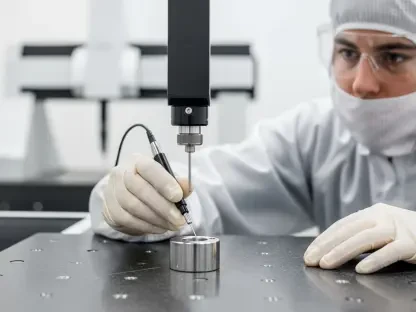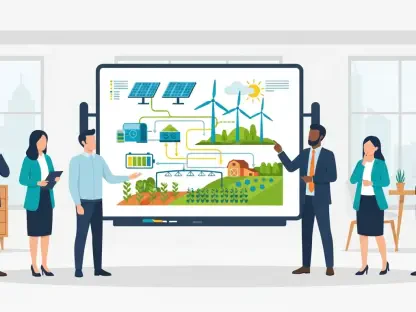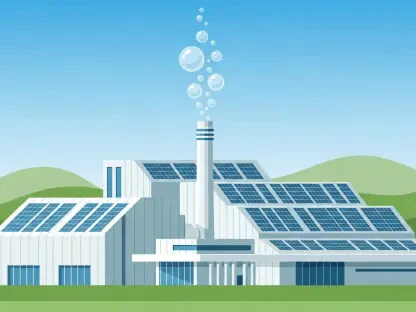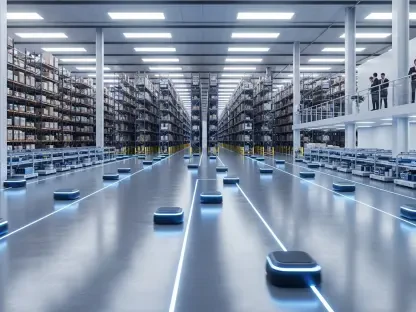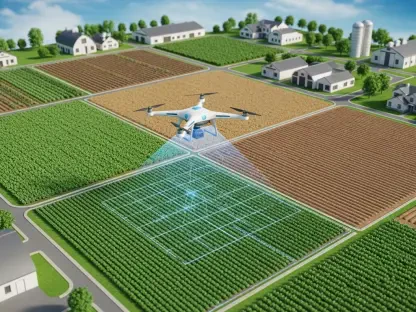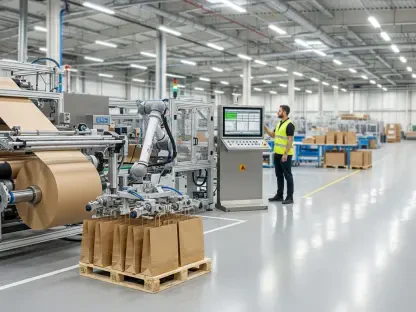In an era where environmental concerns are driving innovation across industries, the quest for sustainable packaging solutions has taken center stage with remarkable urgency. A recent study conducted by Fraunhofer UMSICHT for OutNature GmbH, published on October 6, 2025, unveils an intriguing option: paper derived from the silphium plant, a perennial crop originally from North America and now cultivated in Germany. This material presents a compelling alternative to traditional wood pulp and plastic-based packaging, promising a reduced ecological footprint at a time when industries are under pressure to adopt greener practices. The research, grounded in a comprehensive life cycle assessment (LCA), evaluates how silphium paper—with a 35 percent silphie fiber content—compares to conventional products like kraft and test liners. As global demand for eco-friendly materials surges, this innovative resource could play a pivotal role in reshaping the packaging sector. The journey of silphium paper offers a blend of hope and challenge, inviting a deeper look into its potential to transform sustainable manufacturing.
Environmental Impact of Silphium Paper
Climate Benefits and Carbon Reduction
Silphium paper emerges as a standout in the fight against climate change, primarily due to its impressive capacity to slash carbon emissions in ways traditional paper cannot match. The study reveals a reduction of 257 kg CO2 equivalent per ton of fiber, a feat achieved through a clever integration with biogas production. During this process, residues from fermentation are repurposed into fiber for paper, while the biogas itself is converted into electricity via combined heat and power plants. This dual-purpose approach not only minimizes waste but also offsets a significant portion of the emissions generated during production. Such a strategy aligns with broader goals of creating circular economies, where every byproduct finds a purpose. The environmental advantage here is clear, positioning silphium as a material that could help industries meet stringent carbon reduction targets without sacrificing functionality.
Another key factor bolstering the climate-friendly profile of silphium paper lies in the energy sources used during its manufacture, setting it apart from many conventional alternatives. Unlike standard paper mills that often depend on fossil fuels, the facilities producing silphie paper leverage renewable energy, resulting in notably lower greenhouse gas emissions. This choice of energy source creates a stark contrast with test liners made from recycled paper, which, despite their recycled content, may still carry a heavier carbon burden due to energy-intensive processes. The adoption of cleaner energy in production underscores a forward-thinking approach to manufacturing, one that prioritizes sustainability at every stage. However, while these reductions are promising, they represent only part of the broader environmental picture, prompting a need to examine other impact areas to fully understand the material’s footprint.
Challenges in Non-Climate Categories
While silphium paper scores high on climate benefits, its environmental impact in other categories reveals a more complex reality that cannot be overlooked. Cultivation of the silphium plant, for instance, often demands significant land use, which can encroach on natural habitats or compete with food production if not managed carefully. Additionally, water consumption during farming raises concerns, particularly in regions where resources are scarce. These factors contribute to a higher environmental footprint in non-climate areas compared to some traditional paper sources. The study emphasizes that agricultural practices play a critical role in determining the severity of these impacts, suggesting that sustainable farming techniques could mitigate some of these drawbacks. Addressing these challenges is essential if silphium is to be viewed as a truly holistic solution.
Beyond land and water issues, the broader ecological implications of silphium cultivation also warrant scrutiny as the material gains traction. Factors such as soil health and biodiversity can be affected by intensive farming methods, potentially offsetting some of the climate gains if not handled with foresight. The study highlights that while carbon reduction is a significant win, these other environmental pressures must be balanced through innovative approaches to agriculture. For example, integrating silphium into crop rotation systems or adopting precision farming could lessen its impact on ecosystems. Until such strategies are widely implemented, the material’s sustainability credentials remain a work in progress, underscoring the importance of a comprehensive assessment that goes beyond emissions alone. These insights serve as a reminder that no solution is without trade-offs, and careful management is key to maximizing benefits.
Practical Applications and Versatility
Packaging Solutions for Everyday Use
Silphium paper is carving out a niche in the packaging world, particularly with its ability to meet stringent safety standards for everyday consumer needs. One of its standout qualities is its suitability for direct food contact, making it an excellent choice for items like fruit and vegetable trays, folding cartons, and even corrugated cardboard used in food transport. This compatibility addresses a growing demand for materials that can safely interact with consumables without compromising quality or hygiene. As regulations around food packaging tighten globally, having a renewable option like silphium paper that aligns with these requirements offers a significant advantage to manufacturers. Its emergence could help reduce dependence on plastic-based solutions, aligning with consumer preferences for sustainable and safe alternatives in daily use.
Moreover, the practical appeal of silphium paper extends to its ability to integrate seamlessly into existing packaging supply chains without requiring major overhauls. Industries looking to transition away from less sustainable materials will find this adaptability particularly valuable, as it minimizes disruption while still advancing environmental goals. The material’s strength and durability, comparable to conventional liners, ensure it can handle the rigors of transport and storage, which are critical for food-related applications. This balance of safety and functionality positions silphium paper as a viable contender in markets where both performance and sustainability are non-negotiable. As awareness of eco-friendly packaging grows, such attributes could drive wider adoption across diverse sectors, from retail to agriculture, paving the way for broader impact.
Compatibility with Printing
The versatility of silphium paper is further enhanced by its compatibility with standard printing processes, a feature that significantly boosts its appeal for branded packaging solutions. Manufacturers can apply logos, designs, and product information directly onto the material without needing specialized equipment or techniques, ensuring cost-effectiveness and efficiency. This adaptability makes it an attractive option for businesses aiming to maintain consistent branding while transitioning to greener materials. Whether it’s a vibrant design on a folding carton or essential labeling on corrugated boxes, silphium paper delivers the flexibility needed to meet modern marketing demands. Such practicality ensures that sustainability does not come at the expense of visual appeal or operational ease.
Additionally, the ability to support high-quality printing opens up new avenues for silphium paper in competitive consumer markets where packaging plays a key role in product differentiation. Retailers and producers can leverage this feature to create eye-catching designs that resonate with environmentally conscious buyers, thereby enhancing market positioning. The material’s performance in this area also reduces the learning curve for companies unfamiliar with alternative fibers, facilitating a smoother shift from traditional options. As the packaging industry continues to evolve, having a material that marries environmental benefits with operational compatibility is a significant step forward. This characteristic not only broadens the scope of silphium paper’s applications but also reinforces its potential to become a staple in sustainable design.
Future Potential and Optimization Needs
Scalability and Production Challenges
Despite its promising attributes, silphium paper faces notable hurdles in scaling up to meet industrial demands, a critical factor for its long-term viability. Currently, production occurs in small quantities within a non-integrated facility, which limits output and increases costs compared to the mass production of conventional paper products. This setup poses a barrier to competing with established materials like kraft and test liners, which benefit from streamlined, large-scale operations. The study points to inefficiencies in the existing manufacturing process as a key area for improvement, suggesting that investments in infrastructure could help bridge the gap. Overcoming these logistical constraints is essential if silphium paper is to transition from a niche innovation to a mainstream solution in the packaging sector.
Furthermore, addressing scalability challenges will require a concerted effort to refine production techniques and integrate silphium paper into larger, more efficient systems over the coming years. Developing dedicated supply chains and optimizing resource allocation during cultivation and processing could significantly boost output while reducing expenses. Collaboration between researchers, manufacturers, and agricultural experts will be vital to achieving these advancements, ensuring that the material can meet growing demand without compromising its environmental benefits. While the current small-scale model highlights silphium paper’s potential, it also serves as a reminder of the practical obstacles that must be navigated. Tackling these issues head-on could position this alternative as a serious contender in the global market, reshaping how sustainable materials are produced and adopted.
Pathways to Enhanced Efficiency
Looking ahead, the optimization of silphium paper production offers a clear pathway to enhancing its competitiveness and environmental impact across multiple dimensions. Innovations in agricultural practices, such as adopting crop rotation or precision farming, could reduce the material’s footprint in areas like land use and water consumption, addressing some of the non-climate challenges identified in the study. Simultaneously, integrating production facilities to combine fiber extraction and paper manufacturing under one roof could streamline operations, cutting both costs and energy use. Such improvements would not only make silphium paper more economically viable but also reinforce its sustainability credentials, appealing to industries seeking reliable green alternatives.
Equally important is the role of research and development in unlocking the full potential of silphium as a raw material for future packaging solutions. Continued studies into the plant’s cultivation and processing methods could yield breakthroughs that enhance fiber quality or reduce production times, further aligning it with market needs. Support from policymakers and industry stakeholders in funding pilot projects or incentivizing adoption could accelerate these advancements, ensuring that silphium paper keeps pace with evolving sustainability standards. As these efforts unfold, the material stands poised to contribute meaningfully to a circular economy, where waste is minimized, and resources are maximized. The journey toward optimization, though complex, holds the promise of transforming silphium paper into a cornerstone of eco-friendly manufacturing.


